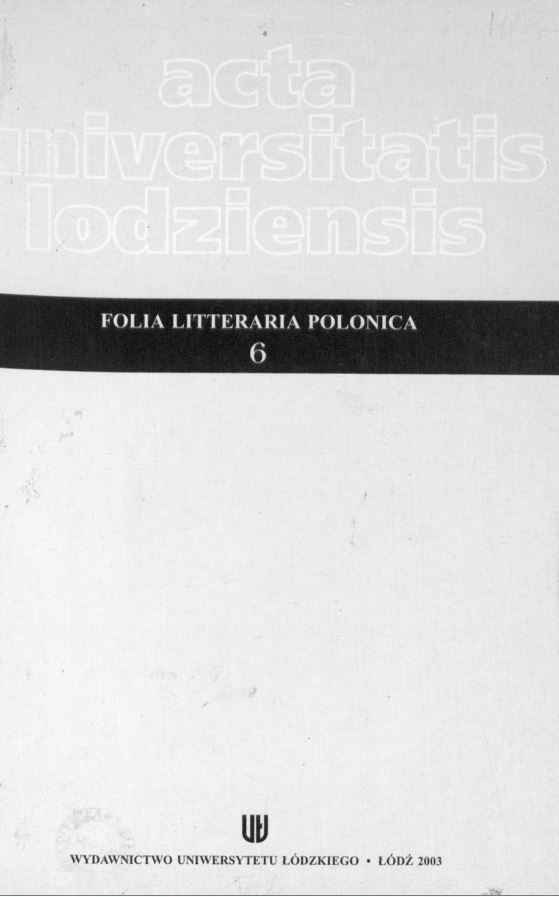Litewskie zamki Słowackiego
DOI:
https://doi.org/10.18778/1505-9057.06.10Abstrakt
The subject of this essay is the medieval castle present in Juliusz Siowacki’s literary works. I am interested in the ways оf its presentation, attempting to recall the climate of antiquity and the evolution of the picture of the castle. Therefore, I discuss the image of the castle created in the early works: the poetic novel Hugo (1829), the drama Mindowe (1832), as well as in the later works belonging to the so called mystical period: Wallenrod and Konrad Wallenrod. Helsztyński lies beyond the scope of my interests as its research requires a different perspective.
I present in Hugo a stereotypical model of forming architectural space Słowacki draws a very sketchy picture of the castle. He leads the reader into the interiors of a pagan temple and a representative hall with only one decorative element: famous pseudo-classical pillars. The picture of the castle is considerably enriched in Mindowe. First of all, the author enlarges its space. He adds a secret passage and furniture, mentions a treasury and a representative hall. This way he slightly violates the stereotype of an interior subordinated to the tragedy convention. Moreover, I emphasize here the way Słowacki compares the Gothic style to the creations of nature e.g. a hall with pillars is compared to a forest, rose windows to stars, a castle to an eagle’s nest. These comparisions tend to illustrate the architectural style - the Gothic and the atmosphere of Middle Ages. This essay shows that the picture of the castle was conceived in opposition to Mickiewicz’s castle presented in Grażyna and Konrad Wallenrod.
The image of the castle in Wallenrod and Konrad Wallenrod varie from the early works. However, the fragmentation of these texts precludes any profound analysis of the problem The poet in Wallenrod associates architectural space with characters' personality: Wallenrod - gloomy Malbork, vindictive Jagiełło - bloody Vilnius, Kiejstut and noble Witold - sunny Troki. In the drama Wallenrod the characters’ “interiors” are somehow reflected in the interiors of the castle.
The castle is given different significance in the fragments of Konrad Wallenrod, where it becomes the place of recognition of God’s truths.
The pictures of Lithuanian castles is created mainly by stereotypes and poetic imagination hardly ever by descriptions of existing buildings. Słowacki did not manage to show the specific type of the castle in Troki in Hugo, although he was personally acquainted with the castle. The image of the castle in Nowogródek was influenced by the tragedy convention and Mickiewicz’s castle in Grażyna. In the later texts the poet lost his interests in architectural details. He focused on the character’s inside, or as in Konrad Wallenrod, on the importance of the word spoken by the prophet.
Pobrania
Pobrania
Opublikowane
Jak cytować
Numer
Dział
Licencja

Utwór dostępny jest na licencji Creative Commons Uznanie autorstwa – Użycie niekomercyjne – Bez utworów zależnych 4.0 Międzynarodowe.











